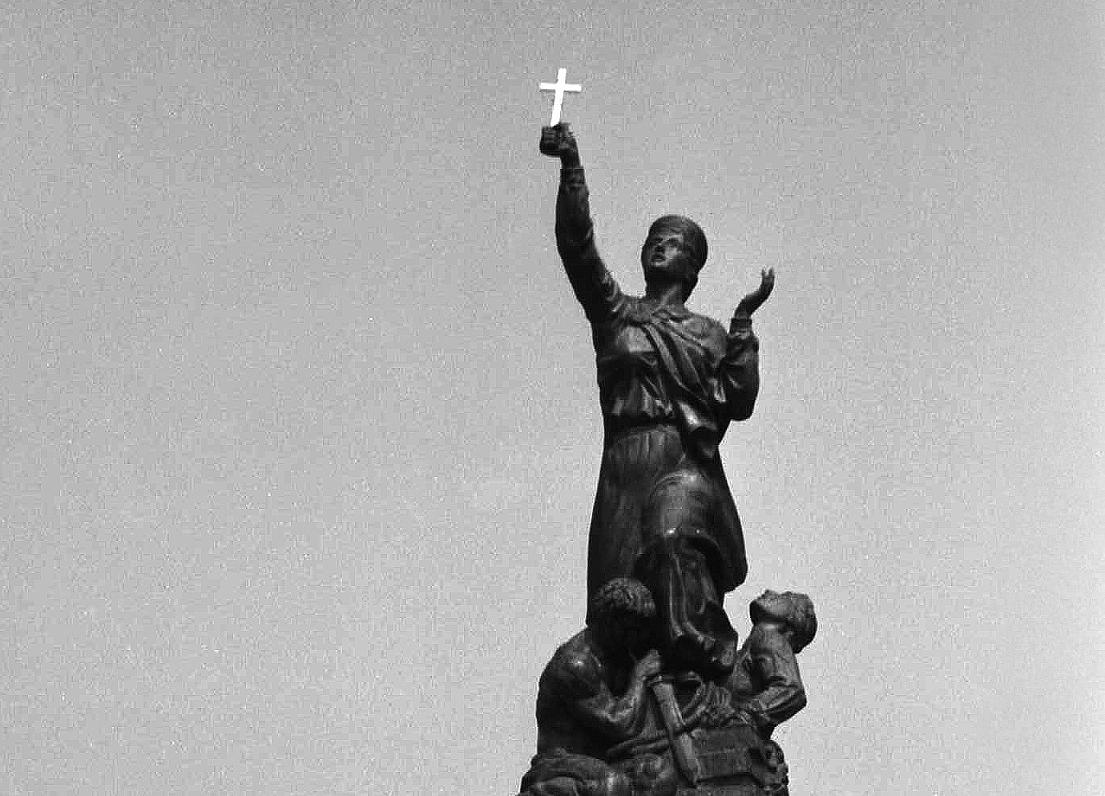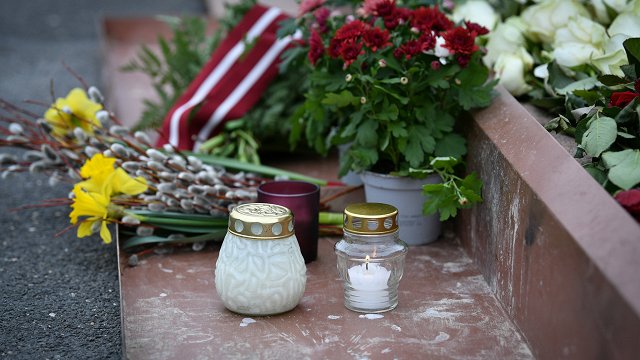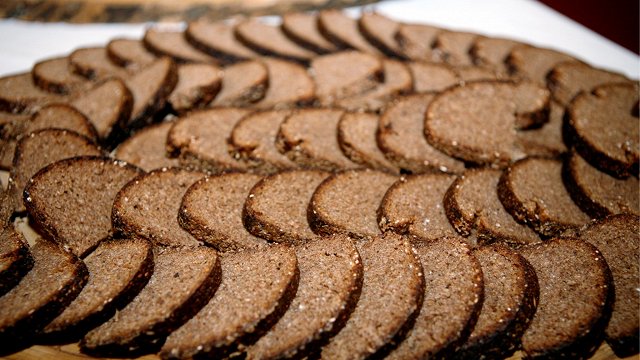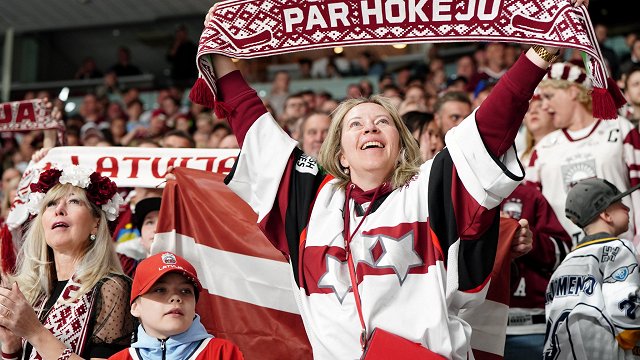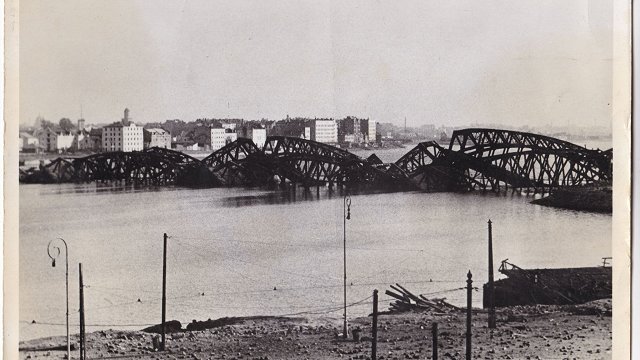This August marked 25 years since the monument was rebuilt after it was torn down by the Soviets in 1950.
Inception and early history
The Atbrīvošanas aleja (Liberation lane) in Rēzekne is sprinkled with monuments important for the history of Latgale, a cultural region in Latvia's east.
What is Latgale?
Latgale is a cultural region of Latvia with its own particular history. Its vibrant cultural center is Daugavpils, Latvia's second largest city housing the impressive Mark Rothko Center. While Rēzekne, often called the rightful capital of Latgale, is home to the stunning 'Gors' cultural centre that styles itself the 'Latgale embassy' and could give any avant-garde Scandinavian opera house a run for its money.
Latgale has always retained its own particular identity - it's a mix where Orthodox, Catholic, Lutheran and Jewish traditions all co-exist. The beautiful region is known for its bodies of water and is poetically referred to as the "land of the blue lakes".
They speak Latgalian in Latgale. Locals say Latgalian is a language in its own right while others classify it as a dialect of Latvian. At any rate, it mutually intelligible with the other Latvian dialects. There are about 165,000 speakers of Latgalian as per the 2011 census.
Read more about the region and how it came to be HERE.
It's here where you'll find a sculpture of the important statesman Francis Trasuns, inscriptions of verse by Ontons Kūkojs and Jurijs Tiņanovs, and also the recently erected monument commemorating the centenary of the Latgale Congress when the region decided once and for all to be part of Latvia.
But the gilded cross in the hands of a woman in bronze towers above them all, high on a granite pedestal. Two other figures are kneeling before the woman.
Officially called Vienoti Latvijai, it is more often referred to as Latgales Māra. It has witnessed much of Latvia's 20th-century history firsthand, after being unveiled on September 8, 1939 shortly after World War II broke out.
Torn down by the occupying Soviet forces, and then reinstated by the Nazis trying to capitalize on populism, it was once again torn down and replaced by a monument of Lenin during the second Soviet occupation that lasted close to fifty years.
It returned to its rightful place only on August 13, 1992 after Latvia regained its independence.
The bronze sculptures signify the victory in the Latvian War of Independence as Latgale was the last region to be liberated from the bolsheviks by the Latvian Army and its allies.
It is also seen to mean the liberation from other powers that dominated Latgale for centuries.
There was a widespread consensus that such a monument should be built in Rēzekne, and its construction and possible look was subject to heated debate in the local press. However it was only in 1930 when the foundation stone was laid and people started donating in earnest for building it.
The place chosen for the monument back then held a chapel dedicated to the Russian emperor. The chapel was moved, but, alas, in vain as a nearby location was later chosen instead.
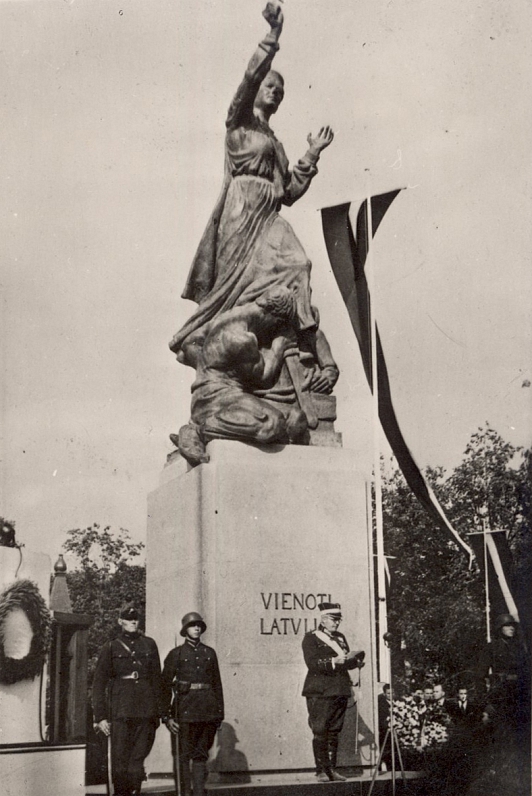
The grand opening
After a contest was announced, the design titled Māras zeme (The Land of Māra) by Leonīds Tomašickis (1904-1996) was picked as the winner. It featured Latgale as a virgin with a cross in her hands. Two figures are lying at her feet, one a soldier breaking chains and the other a genuflected virgin donning a wreath.
This design never saw the light of day, however, and it was not because the artist had only one arm.
"Being a student, he could not do it for lack of time. The Latvian Art Academy rector at that time put an ultimatum to Tomašickis. He wanted to take time off to carry out the job. But the rector told Tomašickis it's possible he may not finish his studies should he be absent," said Latgale historian Kaspars Strods.
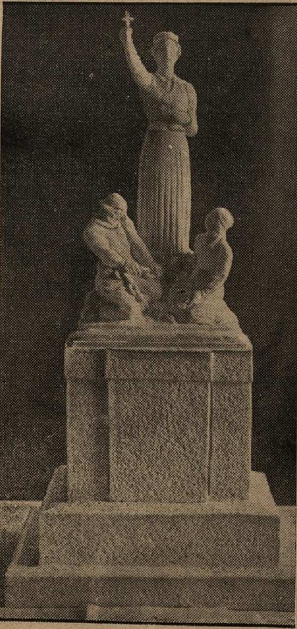
That is why the construction of this symbol of freedom was entrusted to sculptor Kārlis Jansons (1896-1986). He made the monument according to his own liking, and it became much more dynamic and lush than the earlier design.
Jansons chose to retain the original characters - the free Latgale holding the cross, the breaker of chains by her feet, as well as the virgin.
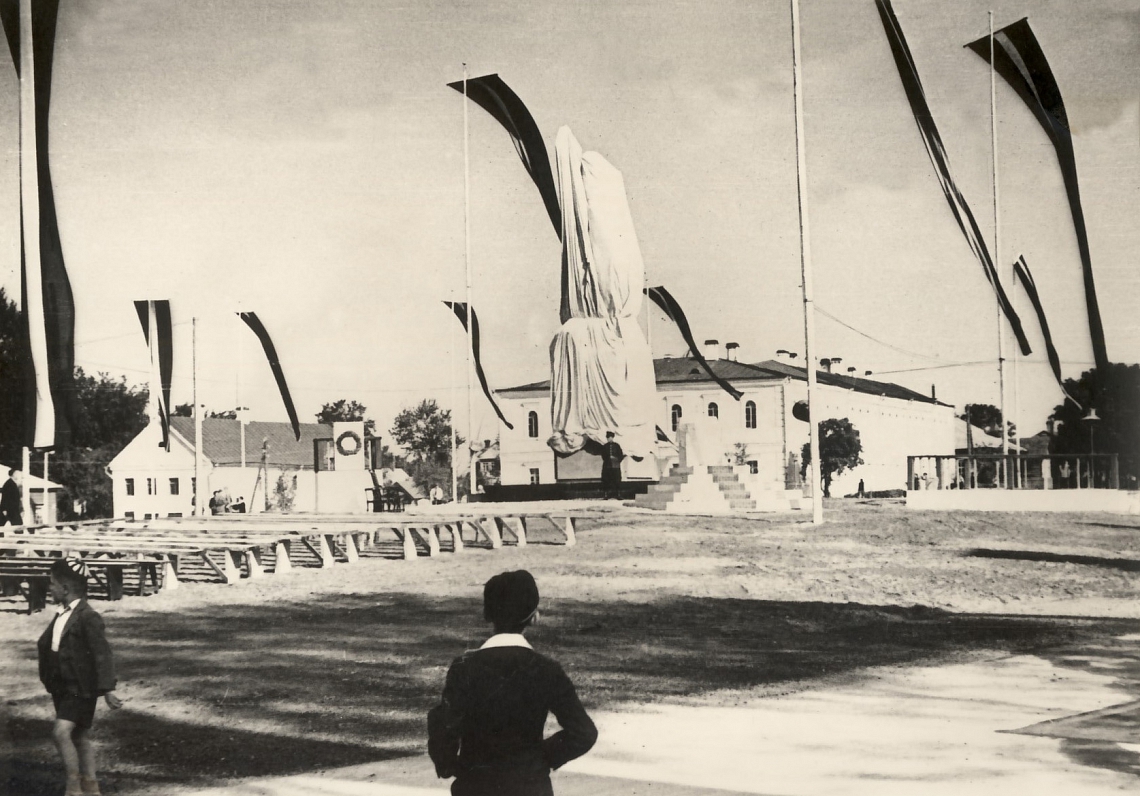
Even though it has an inscription, "United for Latvia", the monument was not initially welcomed as a symbol of unity in Rēzekne. National minorities felt disregarded because the symbols used in the monument did not have anything to do with them.
"In 1939 most people living in Rēzekne were not Latgalian. Most of its population was made up by Russians and Jews. Both felt slighted by the monument... if it had had a stele or an obelisk, maybe all the ethnic groups would have thought it's their monument too," said Valentīns Lukaševičs, a lecturer at the Daugavpils University.
Despite not being unanimous favored by the locals, its opening event drew people in the thousands, including visitors from other towns. Extra trains were sent to Rēzekne offering 50% discount to those who wanted to travel to see the new monument being unveiled. The radio broadcast its opening for twenty five minutes across the whole nation.
Kārlis Ulmanis, the authoritarian leader of Latvia from 1934 to 1940, was notably absent from the crowds. It could be explained by the recent attacks on Poland--before the war, it bordered Latvia-as well as about the fact that Ulmanis had been criticized for sympathizing with the Catholic Church. This faith is still widespread in Latgale whereas the rest of Latvia is mostly Lutheran.
Archbishop Antonijs Springovičs was also not present. It was rumored he had qualms with the monument's sensuous forms that drew attention away from the cross.
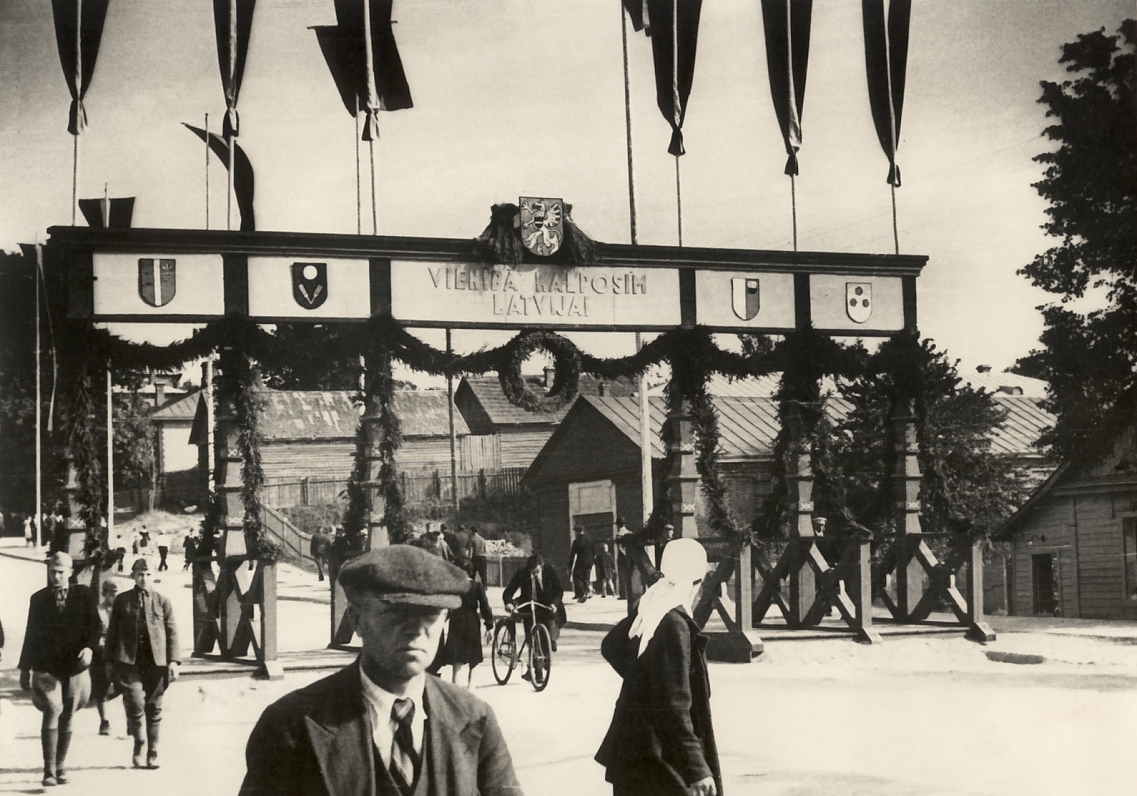
The more sensuous of monuments
The main sculpture seems to be marching, and a further step would see her jump off the base of the sculpture. The powerful, sensuous breaker of chains by her feet symbolizes the fighting during the War of Independence - Latgale was the last of Latvia's regions of what became independent Latvia to be freed from Soviet rule in 1920. Meanwhile the woman kneeling in prayer testifies to the great place catholicism once had in the lives of Latgalians.
Art teacher and sculptor Gunārs Klaučs stresses that the monument can be compared to the Freedom Monument and the sculptures at the Riga Brethren Cemetery.
While Valentīns Lukaševičs notes that the sculpture group not only appears dynamic but sensuous to the point of being erotic.
Kārlis Jansons, the sculptor, used Cēsis local Villija Everte as a model for the main sculpture - a woman of considerable beauty. She did not want her face to be put on a monument, so Jansons instead modeled the face from the old five lats coin popularly nicknamed Milda.
Abandoned in an abattoir
It stood for just a year until Latvia was occupied by the Soviet Union in 1940 a sad fate befell the sculpture. First, the cross was removed as a symbol not fitting Soviet ideology. Soon, the United for Latvia sign at the base of the monument was erased as well. A few months later the monument was torn down.
The woman symbolizing Latgale had its arms cut off, while another sculpture had its head removed. The remains were abandoned at the Rēzekne slaughterhouse.
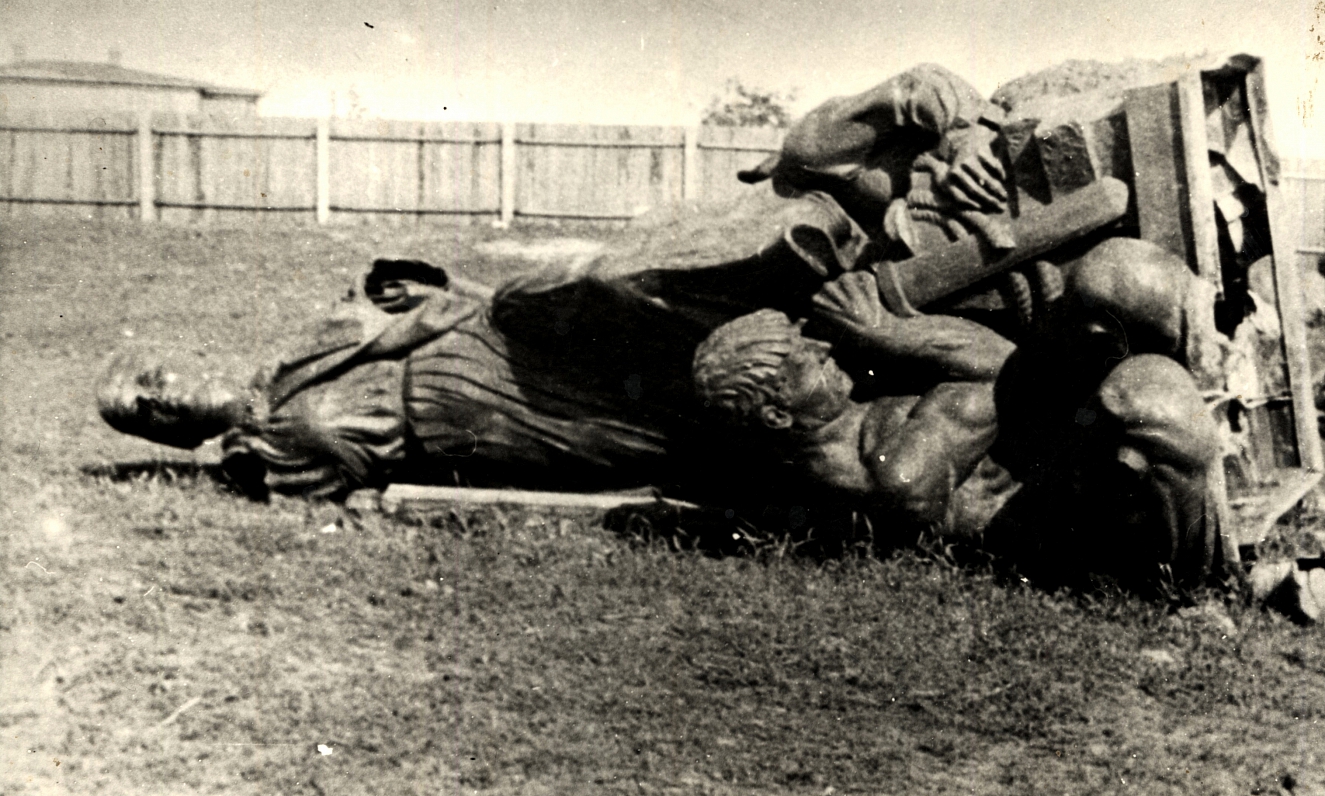
Three years later, however, it was moved back to its location under the Nazi rule.
"Why did they do that, one may ask. One of the answers is that in early 1943 German troops suffered their first major defeats at Stalingrad. Seeking to gather support among the local populace by means of propaganda, they allowed re-erecting the monument," said Kaspars Strods, a historian at the Latgale Cultural Heritage museum.
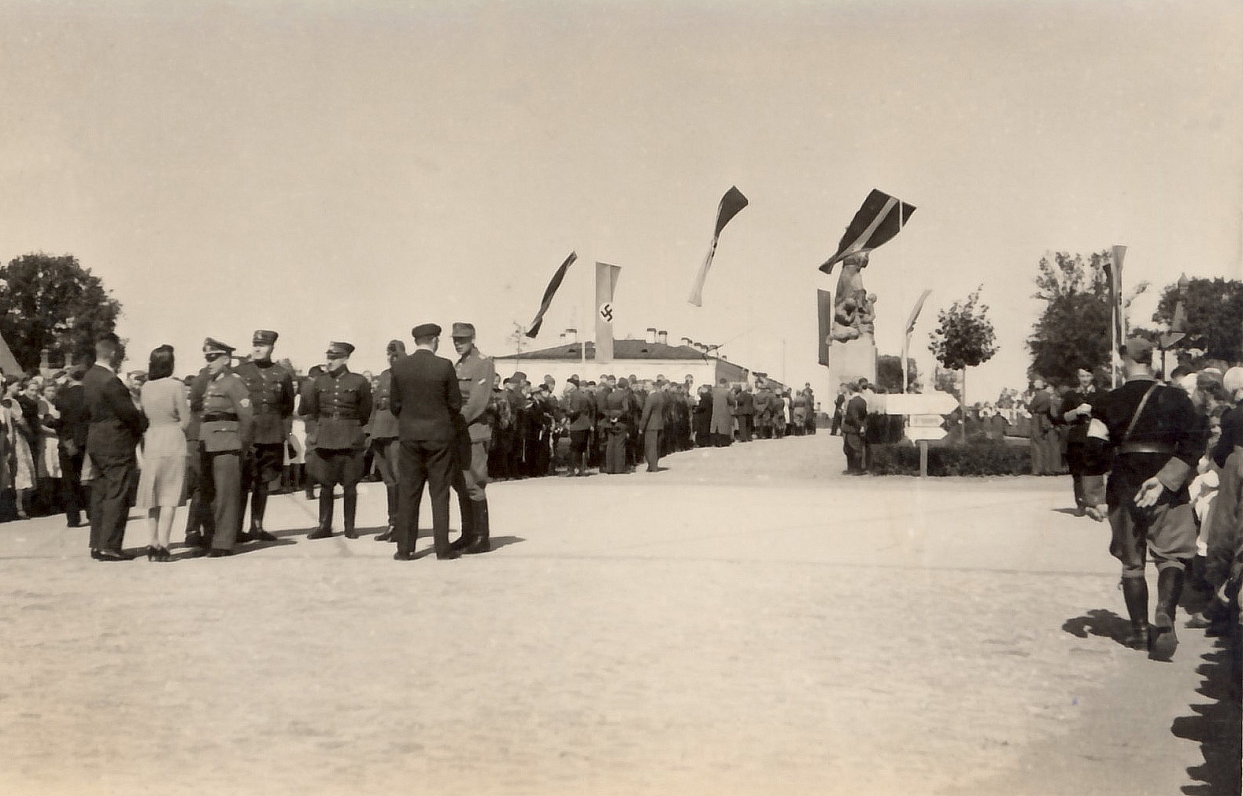
Latgale locals collected donations to repair the monument, parts of which were lost. Just like in 1939, the monument was restored with a ceremony in 1943.
It stood there until 1950 and was untouched even as Russian planes bombarded Rēzekne in 1944, all but utterly destroying the town.
"In 1950 the monument was removed following complaints by the locals. It disappeared without trace. For 15 years nothing stood there, just a pedestal and nothing else. In 1965 a monument to Lenin was unveiled in its stead," said Kaspars Strods.
The towering Lenin figure stood there until the early 1990s but already in the late 80s activists started petitioning for the original monument to be restored.
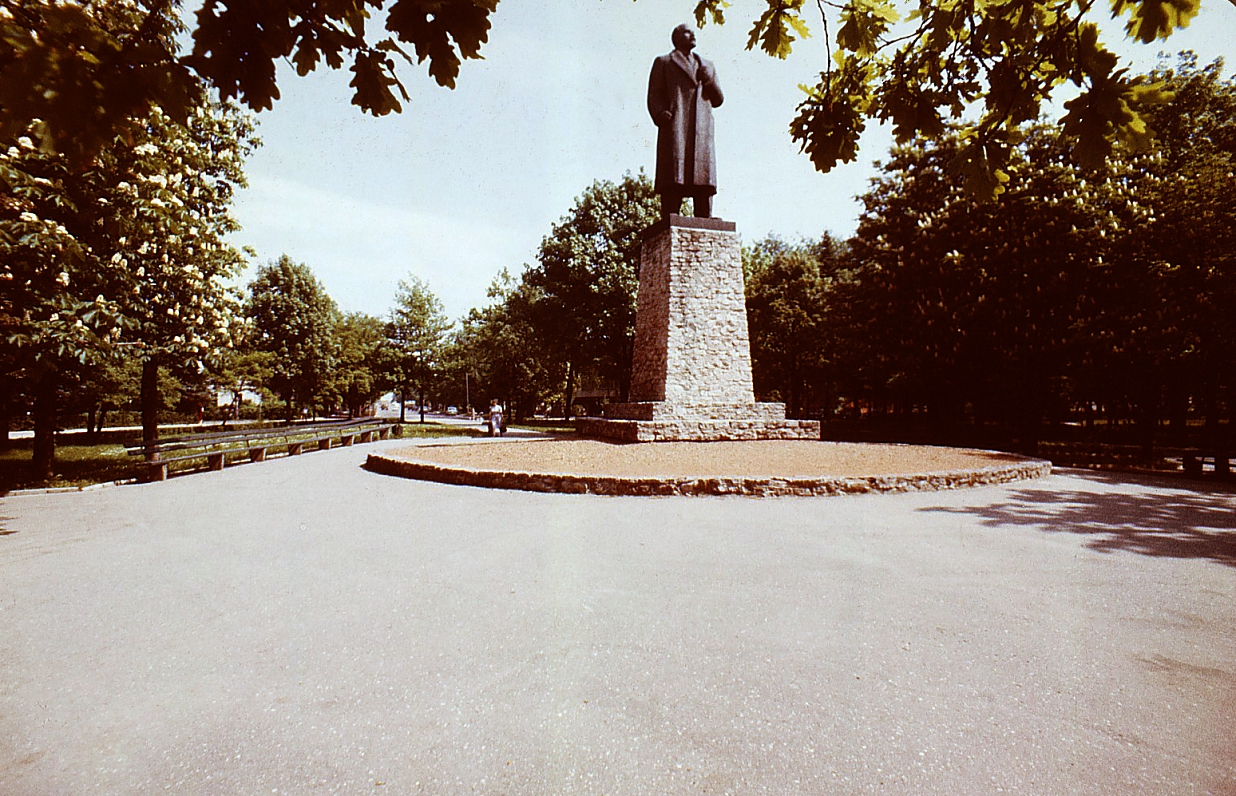
Even in these times, often called the National Awakening, people could not really express themselves freely. That's why the monument was called the Māra of Latvia, forgoing names that may ring more patriotic. It's unclear as to how the moniker came to be, but it's possible that it comes from the original design name, The Land of Māra.
In search of the original monument
The Cīņa newspaper wrote in March 1989 that the Council of Ministers of the Latvian SSR had allowed rebuilding the monument as a symbol of Latgale's unity with the other Latvian cultural regions. The atmosphere was still too stifled to call it the Monument to the Liberation of Latgale. People involved in the reconstruction said that there was all but unanimous public support to reinstating the monument.
They sought for the monument that was torn down in 1950 too, though unsuccessfully.
"There were even ESPs, each one claiming a different place [where it could be located]. It ended with nothing. A bit later a man of honor, who had previously worked at the NKVD, said, don't waste your time, it has been taken away. He supposedly knew it from inside sources," said artist Osvalds Zvejsalnieks, one of the initiators for reinstating the monument.
Instead the lost sculpture was restored by Kārlis Jansons' son Andrejs - himself also a sculptor - and Indulis Folkmanis. The Jansons family had hung on to sketches of the first monument, hence it was restored to closely resemble the one erected in 1939.
There was discussion over where to put the new statue, as the imposing Lenin sculpture still stood in its former place, but following the August 1991 putsch it was removed, making place once more for the upcoming Māra of Latgale.
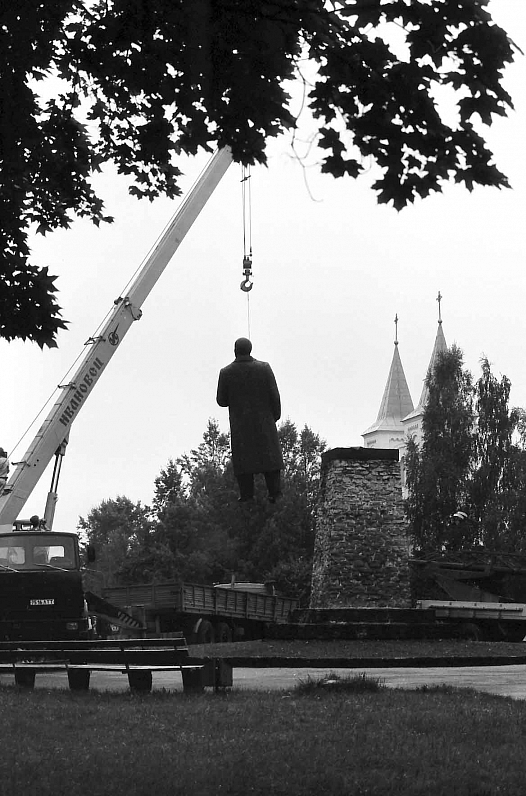
The new sculpture was funded by the Council of Ministers, private donations and the Catholic church.
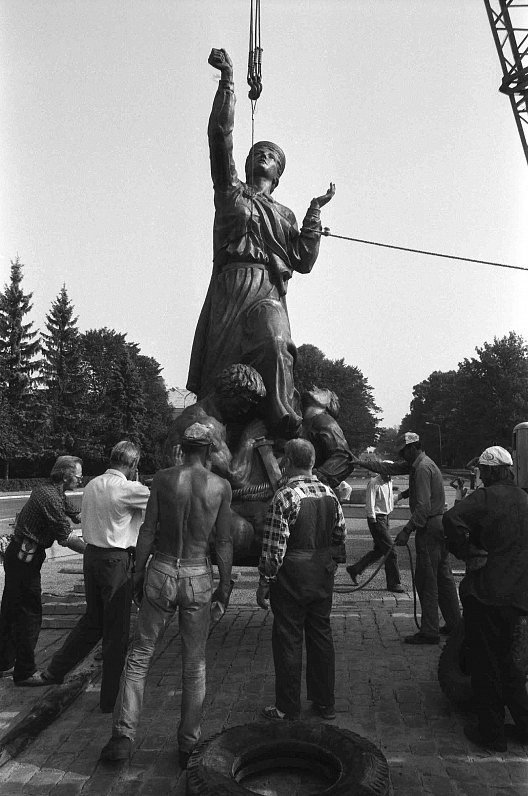
While the original monument is lost without trace, the new one includes a small piece that was preserved in a chest for 42 years by Rēzekne local Ludmila Sahareva.
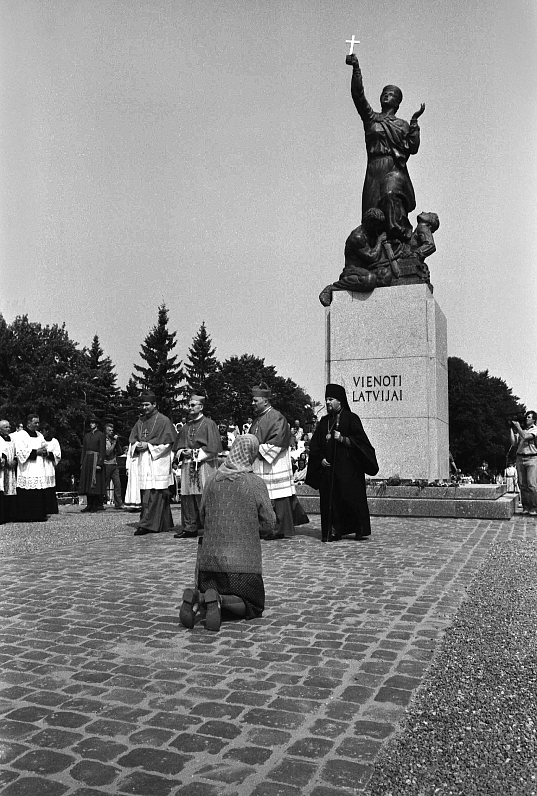
The new work, also called United for Latvia, was unveiled on August 13, 1992 in the place where in its first incarnation it hadn't stood even for a decade. The event was part of the World Latgalians' Congress, and thousands attended, with the crowds gripped with emotion and hopes of a brighter future for Latgale, and Latvia.
